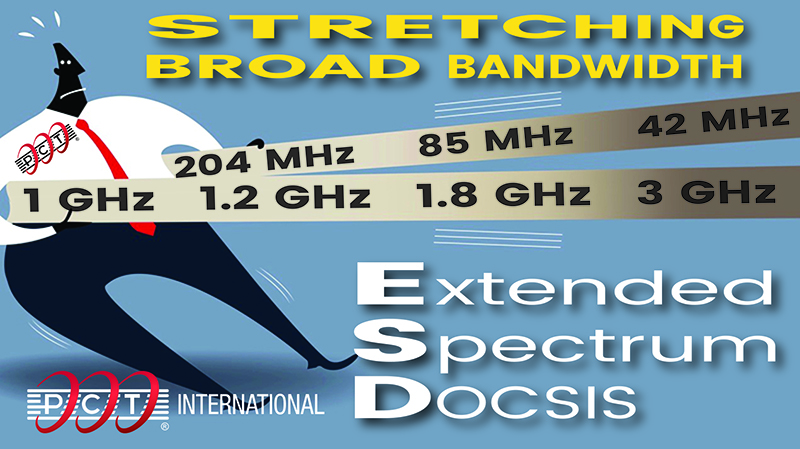Author: Rick Haube, PCT Vice President of Sales, 5/01/2019

In the world of HFC, the capacity per subscriber will continue to increase and the key enablers are technology and bandwidth over various transmission mediums. If we had a solution that seamlessly delivered 10G symmetrically with minimal operational and capital expense over the existing HFC infrastructure, it would certainly improve the customer experience.
There’s been a lot of discussions recently surrounding ESD (Extended Spectrum DOCSIS) stretching the bandwidth to 1.8 GHz and perhaps to 3 GHz. Actives and passives at these high frequencies aligned with required specifications (TBD) are simply not ready. Many operators are exploring variations of upstream and downstream band splits i.e. 85/102, 204/258, and so on to get more upstream capacity. These may come with a heavy capital and operational cost in most cases.
Stretch 1…2…
1. Changing the bandsplit immediately removes all 2-way actives operating at a different split. Over 98% of N. America uses 5 to 42 MHz upstream and 54 to >1,200 MHz downstream. Drop amplifiers in 30% of the homes, line extender amplifiers, distribution amplifiers and nodes need to be removed / replaced / modified.
2. The upstream cable loss at higher return frequencies creates network design challenges such that the return path cable and passive loss exceeds return path amplification. Time to re-space / re-splice amps. Passives / taps also may need to be replaced.
There is a solution on the horizon that bypasses the amplifiers and uses the 1.2 to 1.8 GHz band delivering gigabit symmetrical services at less than half of the existing upgrade cost without changing band splits that effect the customer experience. The last mile of passive equipment through the multi-taps, in-home coax, connectors and passives will be instrumental for the transmission medium. An efficient path for capacity.
Coming soon!

